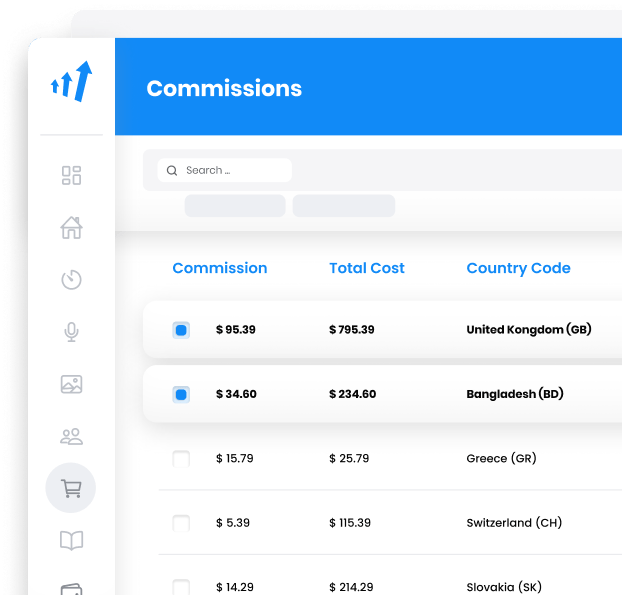What is a last click?
At its core, Last Click Attribution is a straightforward attribution model that bestows the entire value of a sale or conversion upon the last source or interaction a customer engaged with before finalizing a purchase. Within affiliate marketing, this model means that the affiliate whose link was last clicked before the purchase is credited with the conversion.
Application in Affiliate Marketing
In the affiliate marketing sphere, Last Click Attribution carries substantial weight as it determines which affiliate earns the commission for a sale. Affiliates channel traffic to a merchant’s site through strategic links, and if their link is the last one clicked prior to a purchase, they gain the credit and corresponding commission. The model’s popularity stems from its simplicity and ease of integration within affiliate programs.

Pros and Cons of Last Click Attribution
Pros
- Simplicity: The model is easy to understand and implement, making it a favored choice for marketers and affiliates.
- Clear Attribution: Offers a straightforward path of attribution to the last touchpoint, simplifying the process of credit allocation.
- Focus on Conversion: Emphasizes the final step in the customer journey, which is useful for identifying the most effective conversion channels.
Cons
- Ignores Other Touchpoints: Disregards prior interactions that may have influenced the customer, resulting in an incomplete picture of the customer journey.
- Overemphasis on Final Touch: Risks leading to over-investment in channels that close sales while neglecting those that foster initial interest and engagement.
- Potential for Bias: Can skew perceptions of marketing channel effectiveness, leading to unbalanced marketing strategies.
Last Click Attribution vs. Other Models
First Click Attribution
First Click Attribution assigns credit to the initial interaction that led a customer to engage with a brand. It is useful for acknowledging channels that drive initial awareness but may overlook the significance of subsequent interactions.
Multi-Touch Attribution
Multi-touch models distribute credit across multiple touchpoints throughout the customer journey, providing a comprehensive view of channel effectiveness. This approach acknowledges the influence of all interactions contributing to a conversion, addressing the limitations of both first and last-click models.
Implementation in Affiliate Marketing
Tracking and Reporting
Affiliates employ tracking links embedded with unique identifiers to monitor user interactions. When a user clicks on an affiliate link and completes a purchase, the last click data is recorded, attributing the sale to the respective affiliate. This process is facilitated by affiliate networks and software that track and report on conversions.
Challenges and Considerations
- Data Accuracy: Ensuring precise tracking and reporting is crucial for fair attribution and compensation.
- Attribution Bias: Marketers must be vigilant of biases that may arise from over-reliance on last-click data.
- Strategic Balance: Combining last-click with other models can yield more balanced insights, aiding marketers in optimizing their strategies across the entire funnel.
Alternatives to Last Click Attribution
Linear Attribution
Linear Attribution allocates credit equally across all touchpoints in the customer journey, offering a balanced view of each channel’s contribution to conversions.
Time Decay Attribution
Time Decay Attribution assigns more credit to interactions closer to the conversion event, acknowledging the increasing influence of touchpoints as the purchase decision nears.
Position-Based Attribution
Position-Based Attribution distributes a higher percentage of credit to the first and last interactions, with the remaining credit spread among the middle touchpoints. This model captures the importance of both initial awareness and final conversion triggers.
Frequently Asked Questions
What is non-last click attribution?
Non-last click attribution is a model that gives credit to all touchpoints in the conversion path, rather than just the last one.
How can I use last-click attribution?
In order to use last click attribution, you will need to set up your Google Analytics account to attribute credit to the last interaction that a user has with your site before converting.
A guide to different types of affiliate tracking
Explore the comprehensive guide on affiliate tracking methods like cookie, postback URL, and IP tracking to optimize your affiliate marketing strategy. Learn how Post Affiliate Pro's advanced software ensures precise tracking, maximizes sales, and provides exceptional support for seamless affiliate cooperation. Unlock your brand's potential with cutting-edge tracking solutions today!
Explore Post Affiliate Pro's comprehensive Affiliate Marketing Glossary to enhance your industry knowledge with easy-to-understand definitions of essential terms. Perfect for marketers seeking to understand the fundamentals and advanced concepts, this glossary helps you master the language of affiliate marketing. Visit now to boost your expertise!






